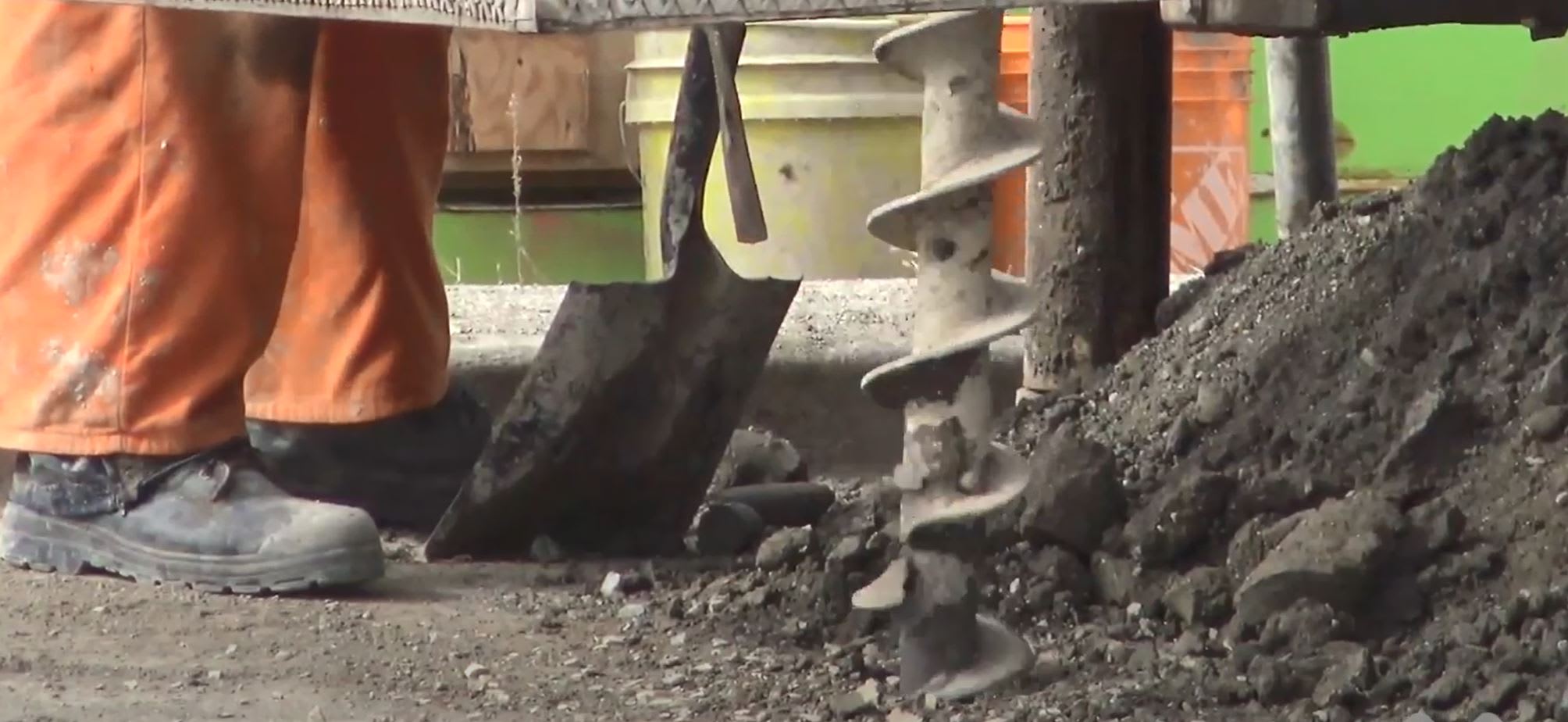Video shows start of Hurontario LRT construction
Here’s what residents can expect as crews drill down for the important transit route.
Apr 26, 2020
Planning and techniques for the Hurontario light rail transit (LRT) project go back years – arguably, centuries as we’ll explain in the video below.
But right now, crews are hitting the ground to make it happen.
The LRT route has reached the first phase of actual construction, and we thought we’d set the stage of what communities – and future customers watching for progress – will see this spring.
A bore hole is drilled into the ground. (Metrolinx photo)
And it starts by drilling down into needed details – beyond this feature.
The Mobilinx construction team – those who are actually building the LRT for Metrolinx – has started drilling boreholes throughout the corridor that stretches along Hurontario Street in Mississauga and Brampton, Ont.
Borehole investigations are the first part of site assessment work, and as part of the project commitment, Metrolinx is required to evaluate the physical properties of the area where the LRT will be built. Boreholes will be drilled at various points along the Hurontario corridor in order to collect soil and rock samples for further laboratory testing.
Getting into the nitty-gritty, it works like this:
- A deep hole is made into the ground using a small drill rig which is attached to a conventional truck.
- Once the sample point has been reached and the required sample is collected, it is sent for testing
- By understanding the soil, groundwater and bedrock characteristics along the rail alignment, Mobilinx is able to optimize and complete the design work for the LRT foundation
- The information gathered is used to create detailed engineering plans for construction activities.
Here is a short video that shows you what these investigations actually look like, as well as their lengthy history in construction projects.
Throughout this phase of construction, Metrolinx is working with Mobilinx to ensure work is less disruptive to commuters and neighbouring communities.
There may be short-term lane reductions on Hurontario Street, resulting in minor traffic delays, and pedestrian detours.
A crew member handles the controls of a drill machine. (Metrolinx photo)
Residents are reminded to take care when travelling near construction sites and to obey construction signage. Transit riders can check in regularly with their local transit providers for any changes to schedules or bus stops. And residents and businesses near the work site can expect to hear noise caused by trucks, excavators, and other construction equipment as required.
To get a glimpse at what construction work is coming for the project, take a look at the infographic below.
Building a major new light rail transit route takes patience and understanding from communities, as well as planning and interesting techniques from builders. In continuing stories, as we’ve done with other transit projects, we’ll continue to break down the route ahead.
Want to see some of our past features on the Hurontario project? Just click here.
